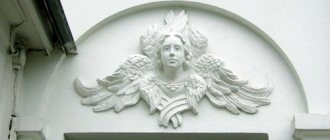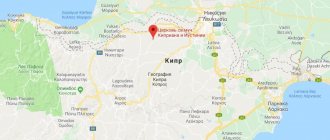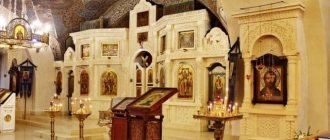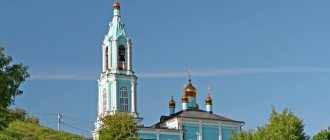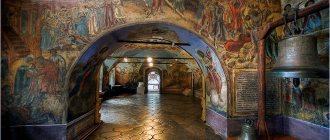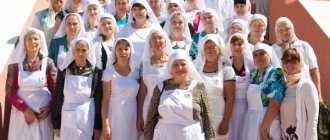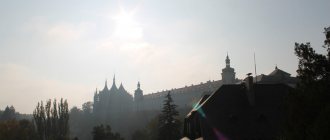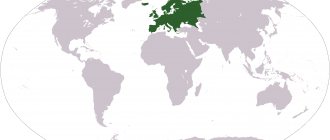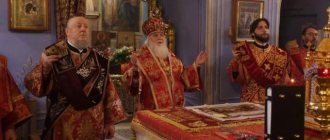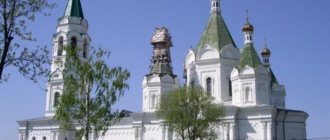Mir
Russia Moscow Church of Pimen the Great in Novye Vorotniki (Moscow) Map is loading…
{"format":"leaflet","minzoom":false,"maxzoom":false,"limit":50,"offset":0,"link":"all","sort":[""], "order":[],"headers":"show","mainlabel":"","intro":"","outro":"","searchlabel":"\u2026 \u0441\u043b\u0435\ u0434\u0443\u044e\u0449\u0438\u0435 \u0440\u0435\u0437\u0443\u043b\u044c\u0442\u0430\u0442\u044b","default":"","import-annotation":false,"width ":"auto","height":"350px","centre":{"text":"","title":"""link":"""lat":55.7786100000000004683897714130580425262451171875,"lon": 37.6044399999999967576513881795108318328857421875,"icon":""},"title":"","label":"","icon":"","lines":[],"polygons":[],"circles":[ ],"rectangles":[],"copycoords":false,"static":false,"zoom":8,"defzoom":14,"layers":["OpenStreetMap"],"image layers":[] ,"overlays":[],"resizable":false,"fullscreen":true,"scrollwheelzoom":true,"cluster":false,"clustermaxzoom":9,"clusterzoomonclick":true,"clustermaxradius":80, "clusterspiderfy":true,"geojson":"","clicktarget":"","showtitle":true,"hidenamespace":false,"template":"","userparam":"","activeicon": "","pagelabel":false,"ajaxcoordproperty":"","ajaxquery":"","locations":[{"text":"\u003Cb\u003E\u003Ca href=\"/palomnik/%D0% A6%D0%B5%D1%80%D0%BA%D0%BE%D0%B2%D1%8C_%D0%9F%D0%B8%D0%BC%D0%B5%D0%BD%D0%B0_% D0%92%D0%B5%D0%BB%D0%B8%D0%BA%D0%BE%D0%B3%D0%BE_%D0%B2_%D0%9D%D0%BE%D0%B2%D1% 8B%D1%85_%D0%92%D0%BE%D1%80%D0%BE%D1%82%D0%BD%D0%B8%D0%BA%D0%B0%D1%85_(%D0%9C %D0%BE%D1%81%D0%BA%D0%B2%D0%B0)\» title=\»\u0426\u0435\u0440\u043a\u043e\u0432\u044c \u041f\u0438\u043c\u0435\ u043d\u0430 \u0412\u0435\u043b\u0438\u043a\u043e\u0433\u043e \u0432 \u041d\u043e\u0432\u044b\u0445 \u0412\u043e\u0440\u043e\ u0442\u043d\u0438\u043a\u0430\ u0445 (\u041c\u043e\u0441\u043a\u0432\u0430)\»\u003E\u0426\u0435\u0440\u043a\u043e\u0432\u044c \u041f\u0438\u043c\u0435\u043d \u0430 \u0412\u0435\ u043b\u0438\u043a\u043e\u0433\u043e \u0432 \u041d\u043e\u0432\u044b\u0445 \u0412\u043e\u0440\u043e\u0442\u043d\u0438\u043a\u 0430\u0445 (\u041c\u043e\u0441 \u043a\u0432\u0430)\u003C/a\u003E\u003C/b\u003E\u003Chr /\u003E\u003Ca href=\"/palomnik/%D0%A1%D0%B2%D0%BE%D0%B9% D1%81%D1%82%D0%B2%D0%BE:%D0%90%D0%BD%D0%BD%D0%BE%D1%82%D0%B0%D1%86%D0%B8%D1 %8F\" title=\"\u0421\u0432\u043e\u0439\u0441\u0442\u0432\u043e:\u0410\u043d\u043d\u043e\u0442\u0430\u0446\u0438\u044f\"\u003E\u04 10\ u043d\u043d\u043e\u0442\u0430\u0446\u0438\u044f\u003C/a\u003E: "'\u0426\u0435\u0440\u043a\u043e\u0432\u044c \u041f\u0438\u04 3c\u0435\u043d\u0430 \u0412\u0435\u043b\u0438\u043a\u043e\u0433\u043e (\u0422\u0440\u043e\u0438\u0446\u044b \u0416\u0438\u0432\u043e\u043d\u0430\ u0447\u003Cspan class=\»smw -highlighter\" data-type=\"2\" data-state=\"persistent\" data-title=\"\u0418\u043d\u0444\u043e\u0440\u043c\u0430\u0446\u0438\u044f\" title=\»\u0026#039;\u0026#039;\u0026#039;\u0426\u0435\u0440\u043a\u043e\u0432\u044c \u041f\u0438\u043c\u0435\u043d\u0430 \u0412\ u0435\ u043b\u0438\u043a\u043e\u0433\u043e (\u0422\u0440\u043e\u0438\u0446\u044b \u0416\u0438\u0432\u043e\u043d\u0430\u0447\u0430\u0 43b\u044c\u043d\u043e\u0439 )\u0026#039;\u0026#039;\u0026#039; \u0447\u0442\u043e \u0432 \u041d\u043e\u0432\u044b\u0445 \u0412\u043e\u0440\u043e\u0442\u043d\u0438\u043a\u0430\u0445 \u043 2\u0421\u0443\u0449\u0451\u0432 \u0435 (\u0426\u0435\u0440\u043a\u043e\u0432\u044c \u041f\u0438\u043c\u0435\u043d\u0430 \u041d\u043e\u0432\u043e\u0433\u043e ,\u041f\u0438\u043c\u0435 \u043d\u043e\u0432\u0441\u043a\u0430\u044f \u0446\u0435\u0440\u043a\u043e\u0432\u044c, \u0422\u0440\u043e\u0438\u0446\u043a \u0430\u044f \u0446\u0435\ u0440\u043a\u043e\u0432\u044c, \u0421\u0432\u044f\u0442\u043e\u0442\u0440\u043e\u0438\u0446\u043a\u0430\u044f \u0446\u0435\u 0440\u043a\u043e\u0432\u044c ) \u2014 \u043f\u0440\u0430\u0432\u043e\u0441\u043b\u0430\u0432\u043d\u044b\u0439 \u0445\u0440\u0430\u043c \u0418\u0432\u04 35\u0440\u0441\u043a\u043e\ u0433\u043e \u0431\u043b\u0430\u0433\u043e\u0447\u0438\u043d\u0438\u044f \u041c\u043e\u0441\u043a\u043e\u0432\u0441\u043a\u0 43e\u0439\u0433\u043e\u0440\ u043e\u0434\u0441\u043a\u043e\u0439 \u0435\u043f\u0430\u0440\u0445\u0438\u0438. \u0421\u043e\u0432\u0440\u0435\u043c\u0435\u043d\u043d\u043e\u0435 \u0437\u0434\u0430\u043d\u0438\u0435 \u0442\u0440\u0435\ u0445\u043f\u0440\u0435\u0441 \u0442\u043e\u043b\u044c\u043d\u043e\u0433\u043e \u0445\u0440\u0430\u043c\u0430 \u0431\u044b\u043b\u043e \u043f\u043e\u0441 \u0442\u0440\u043e\u0435\u043d \u043e\u0432 1881 \u0433\u043e\u0434\u0443. \u0410\u0440\u0445\u0438\u0442\u0435\u043a\u0442\u043e\u0440 \u0414.\u0410. \u0413\u0443\u0449\u0438\u043d.\»\u003E\u003Cspan class=\»smwtext\»\u003E \u2026 \u003C/span\u003E\u003Cspan class=\»smwttcontent\»\u003E»'\u0426\ u0435\u0440\u043a\u043e\u0432\u044c \u041f\u0438\u043c\u0435\u043d\u0430 \u0412\u0435\u043b\u0438\u043a\u043e\u0433\u043e (\u 0422\u0440\u043e\u0438\u0446 \u044b \u0416\u0438\u0432\u043e\u043d\u0430\u0447\u0430\u043b\u044c\u043d\u043e\u0439)»' \u0447\u0442\u043e \u0432 \u041d\u 043e\u0432\u044b\u0445\ u0412\u043e\u0440\u043e\u0442\u043d\u0438\u043a\u0430\u0445 \u0432 \u0421\u0443\u0449\u0451\u0432\u0435 (\u0426\u0435\u0440\u 043a\u043e\u0432\u044c\u041f \u0438\u043c\u0435\u043d\u0430 \u041d\u043e\u0432\u043e\u0433\u043e, \u041f\u0438\u043c\u0435\u043d\u043e\u0432\u0441\u043a \u0430\u044f \u0446\u0435\ u0440\u043a\u043e\u0432\u044c, \u0422\u0440\u043e\u0438\u0446\u043a\u0430\u044f \u0446\u0435\u0440\u043a\u043e\u0432\u044c, \u0421\u0432\u044f\u0442\ u043e\u0442\u0440\u043e\u0438\u0446\u043a\u0430\u044f \u0446\u0435\u0440\u043a\u043e\u0432\u044c) \u2014 \u043f\u0440\u0430\ u0432\u043e\u0441\u043b\u0430 \u0432\u043d\u044b\u0439 \u0445\u0440\u0430\u043c \u0418\u0432\u0435\u0440\u0441\u043a\u043e\u0433\u043e \u0431\u043b\u0430 \u0433\u043e\u0447\u0438\u043d \u0438\u044f \u041c\u043e\u0441\u043a\u043e\u0432\u0441\u043a\u043e\u0439 \u0433\u043e\u0440\u043e\u0434\u0441\u043a\u043e\ u0439\u0435\u043f\u0430\u0440 \u0445\u0438\u0438. \u0421\u043e\u0432\u0440\u0435\u043c\u0435\u043d\u043d\u043e\u0435 \u0437\u0434\u0430\u043d\u0438\u0435 \u0442\u0440\u0435\ u0445\u043f\u0440\u0435\u0441 \u0442\u043e\u043b\u044c\u043d\u043e\u0433\u043e \u0445\u0440\u0430\u043c\u0430 \u0431\u044b\u043b\u043e \u043f\u043e\u0441 \u0442\u0440\u043e\u0435\u043d \u043e\u0432 1881 \u0433\u043e\u0434\u0443. \u0410\u0440\u0445\u0438\u0442\u0435\u043a\u0442\u043e\u0440 \u0414.\u0410. \u0413\u0443\u0449\u0438\u043d.\u003C/span\u003E\u003C/span\u003E\u0442\u0440\u043e\u0435\u043d\u043e \u0432 1881 \u0433\u043e\ u0434\u0443. \u0410\u0440\u0445\u0438\u0442\u0435\u043a\u0442\u043e\u0440 \u0414.\u0410. \u0413\u0443\u0449\u0438\u043d.","title":"\u0426\u0435\u0440\u043a\u043e\u0432\u044c \u041f\u0438\u043c\u0435\u043d\u0430 \u0412 \u0435\u043b \u0438\u043a\u043e\u0433\u043e \u0432 \u041d\u043e\u0432\u044b\u0445 \u0412\u043e\u0440\u043e\u0442\u043d\u0438\u043a\u0430 \u0445 (\u041c\u043e\u0441\ u043a\u0432\u0430)","link":"""lat":55.7786100000000004683897714130580425262451171875,"lon":37.60443999999999675765138817951083183288 57421875,"icon":""}],,"imageLayers":[]}
55.778401; 37.604466
Russia, Moscow, Novovorotnikovsky lane, 3с1
Moscow
Russia
Phones:
8 (499) 972-18-13; mob. 89251916779 (Archpriest Raphael)
Church of Pimen the Great (Trinity of the Life-Giving)
that in New Vorotniki in Sushchev (Church of Pimen the New, Pimenovskaya Church, Trinity Church, Holy Trinity Church) is an Orthodox church of the Iveron deanery of the Moscow city diocese. The modern building of the three-altar church was built in 1881. Architect D.A. Gushchin.
History[edit]
Interior of the temple of St. Pimen the Great in New Vorotniki is Shekhtel’s undoubted masterpiece - it is the only church interior designed by the architect that has been preserved in its original form.
History of the temple of St. Pimena is replete with reconstructions and renovations. The first wooden church in the name of Pimen the Great dates back to 1658. In 1696-1702, a small stone single-apse church in the name of the Holy Trinity with a small refectory and a southern aisle in the name of Pimen the Great was built in its place. The northern limit in the name of the icon of the Vladimir Mother of God, the bell tower and the extensive four-pillar refectory, existing and currently built between 1796 and 1811, the fence in 1825.
In 1879-1883 The church was expanded by extending the side borders to the east. At the same time, the church was painted according to the model of the Vladimir Cathedral in Kyiv.
In 1893, the temple was once again expanded, this time extending it to the west, due to which the eastern parts of the first tier of the bell tower became part of the first tier of the bell tower and became part of the interior of the temple, which acquired the appearance and dimensions that remain to this day. At the same time, work began on updating the interior. In 1897, Shekhtel presented a project for its new decoration and the creation of new paintings based on the model of the Kyiv Cathedral in the name of St. Vladimir. Based on Shekhtel's sketches, students of the Stroganov School created frescoes for the Church of Pimen the Great. The completion of a huge amount of work was made possible thanks to the generous donations of one of Shekhtel’s regular customers, a parishioner of the temple, Vladimir Petrovich Smirnov, a representative of the family of vodka kings of Russia.
The space of the temple is dominated by a sparkling white marble iconostasis with a majestic image of the Mother of God and Child above it.
Three separate iconostases are merged into a single three-part composition. All three iconostases, although two-tiered, are relatively low. The stepped shape of the iconostasis turns it into the foot of the altarpiece of the Virgin and Child - a copy of the famous composition by V.M. Vasnetsov. A white marble carved lattice separates the sole from the temple itself, emphasizing the significance of the proposed space.
Along with the stone iconostasis, which is rarely used in Russia, the white color of the marble altar barrier is complemented by gold. The gilded lattices in front of the royal doors in the central part of the iconostasis and the side chapels are exquisitely simple and expressive. The smooth gilded surfaces of the icon cases on the walls and pillars of the temple are elegant and beautiful. The color of the golden chandeliers also symbolically reminds us that God is Light.
The temple has 18 multi-figure compositions and 120 images of saints. Such an abundance of images was achieved by reducing their sizes and grouping the figures in twos.
A huge copy of Vasnetsov’s composition “Our Lady of the Altar”, which is the content and compositional core of the temple, reaches the drum of the dome. In the vault of the dome, the God-Man is represented, surrounded by angels, seraphim and cherubim, blessing and bringing the Gospel to the world. On the walls of the church there are scenes from the Old Testament, and between the windows of the dome there are images of the prophets.
In the sails of the dome of the refectory there are images of the evangelists. The base of the vault is framed by images of cherubs, and in the center of the vault is an image of the Holy Spirit.
In the lower parts of the walls, in the spaces between the windows and on the pillars there are images of saints who served the Lord in earthly life in the name of heavenly life. These are the Reverends Anthony and Theodosius of Pechersk, the founders of the Kiev-Pechersk Lavra, the first Russian holy noble princes Boris and Gleb, Metropolitans of Moscow Peter and Alexy, martyrs Prince Michael and Boyar Fyodor of Chernigov, Reverends Sergius of Radonezh and Savva of Zvenigorod, Saints Tikhon of Zadonsk and Demetrius of Rostov and many other saints revered by the Russian Orthodox Church.
Under the vaults there are paintings depicting scenes from the Gospel story. On the right wall, starting from the solea of the southern Pimenovsky chapel, are presented “The Descent of the Holy Spirit on the Apostles and the Mother of God in the Upper Room of Zion” and “The Presentation of the Lord” - a repetition of Vasnetsov’s original. On the contrary, “The Baptism of the Lord” is placed - a copy of the famous composition by Nesterov. Between them, on the western wall - “The Exaltation of the Cross of the Lord.”
In the northern aisle, dedicated to the icon of the Vladimir Mother of God, the western wall is occupied by “The Entry of the Lord into Jerusalem.” Other wall paintings depict events from the life of the Mother of God: the Annunciation, the Nativity of the Virgin Mary, the Entry into the Temple and the Nativity of Christ. The narthex paintings represent the parable of the Good Samaritan and the Good Shepherd.
The paintings of the three altars depict the forefathers and saints of the first centuries of Christianity. The stained glass window of the central altar depicts the “Resurrection of Christ” in the Vladimir chapel - “Prayer for the Cup” in Pimenovsky - the Appearance of Christ to Mary Magdalene. Above the royal doors, Vasnetsov’s composition “The Crucified God - the Son” is recreated, surrounded by angels.
The icons of the first tier of the iconostasis date mainly from the second half of the 17th - early 18th centuries. In the upper part of the iconostasis, in the depths of the marble arches, there are images of the twelve holidays. In the left northern limit are icons dedicated to the feasts of the Mother of God, in the central and right southern limit are feasts from the life of the Savior.
In the second tier of the iconostasis of the central altar there are images of the twelve apostles facing the Savior seated on the throne. On the left side is the seated Mother of God with the Child, surrounded by Old Testament prophets announcing the birth of the Son of God. In the right limit there is a peculiar parallel to this composition: four prophets, predicting the coming of Christ into the world, are addressed to God - the Word, depicted with a cross and an unfolded charter.
The consecration of the marble iconostasis took place in October 1907, and on December 27 of the same year the consecration of the temple in honor of the Holy Trinity and the chapel in honor of the icon of the Vladimir Mother of God at the church of St. Pimen the Great in Novye Vorotniki in Sushchev.
During the Soviet period, the temple was not closed. In April 1922, 12 pounds of “church valuables” were confiscated from the temple. In 1927-1932, the choir director at the Pimenovsky Church was the monk Platon, the future Patriarch Pimen. Subsequently, he annually performed services here on the patronal feast of the church, celebrating his namesake day.
Since 1936, the Pimenovsky Church has become the main Moscow temple of the Renovationists, led by Metropolitan Alexander Vvedensky.
Three and a half months after the death of Alexander Vvedensky, on October 9, the Church of St. Pimen the Great came under the jurisdiction of the Moscow Patriarchate. His Holiness Patriarch Alexy I celebrated the Divine Liturgy there at the end of December 1946. The roof of the temple was leaking and the walls acquired a reddish tint from the moisture that penetrated inside and mixed with the paints. Patriarch Alexy, in the word he delivered during the liturgy, pointing to the walls of the church, said: “The people who served here have forgotten how to blush. The walls turned red for them.”
Story
The first, earliest settlement of Moscow collars, gatekeepers at the city gates, was located near the walls of the Kremlin. At one time, their settlement was located next to Tverskaya Street, where it left a memory of itself in the names of the lanes: Vorotnikovsky and Staropimenovsky, in honor of the temple of the patron saint of collars, Pimen the Great.
In the middle of the 18th century (approximately 1658), Moscow collars were transferred to the outlying village of Sushchevo from Zemlyanoy Town, already heavily built-up and crowded: their former territory was freed up for Streltsy and other courtyards of sovereign people and masters of essential professions. Here, the guards formed another Vorotnikovskaya settlement and around 1672 they built a new settlement church in the name of their traditional patron - St. Pimen, with the main Trinity throne, exactly repeating their old temple. The new settlement of guards remained in the simple name of the local Novovorotnikovsky Lane, where “New Pimen” has stood since then.
This church was also initially wooden (which suggests the relative poverty of Moscow collars) and soon burned down in 1691. With the blessing of Patriarch Adrian, it was built again in 1696-1702, but in stone and stood in the old days on the shore of a large, beautiful pond.
The current fence was built in 1825.
In 1870, a new design for the facade and bell tower was approved, and a new chapel appeared in the name of the Vladimir Icon of the Mother of God, built on the occasion of the miracle revealed from this image. According to legend, a blind boy was once playing here and gropingly picked up an object in his hand. At this time, dust and sand hit his face, he rubbed his eyes with this hand - and instantly regained his sight. The first thing he saw was a small icon carved on a stone, which he held in his hand - it turned out to be the image of Our Lady of Vladimir. A chapel was then built in her name - scientists believe that this happened at the beginning of the 19th century, and when the church was rebuilt at the end of the same century, the chapel was rebuilt by the architect K. M. Bykovsky. This stone icon was kept in the Pimenovsky Church for a long time.
Of course, at the turn of the 19th century there was no longer talk of any Moscow collars and their suburban settlement. The parishioners of “New Pimen” were numerous ordinary Muscovites who lived in that area, who began to ask the authorities to expand the temple due to its cramped space. The work was carried out for several decades - at the beginning of the century, Fyodor Shekhtel himself originally designed its interior decoration with elements and artistic techniques of Moscow Art Nouveau. The Vladimir Cathedral in Kyiv and its low, single-tier iconostasis, similar to the Byzantine one, and even the later paintings of V. Vasnetsov were taken as a model, although the artist himself was not invited to participate in the work on the Moscow Pimenovsky Church. In addition, the ancient Christian symbols of the catacombs were used in the interior design - the image of “Alpha and Omega”, grape vines, palm branches... The decorated and rebuilt Pimenovsky Church was consecrated on December 27, 1907.
After the revolution, difficult days came for New Pimen, despite the fact that it was not closed. In April 1922, 12 pounds 38 pounds 48 spools of “church valuables” were confiscated from the temple.
However, 1917-1937 became the era of the “golden twenty years” for the temple, since during this period four new martyrs served in the church, and St. Patriarch Tikhon and Metropolitan Tryphon (Turkestan) were frequent guests of the temple.
In 1927-1932, the choir director at the Pimenovsky Church was the monk Platon, the future Patriarch Pimen. Subsequently, he annually performed services here on the patronal feast of the church, celebrating his namesake day.
Since 1936, the Pimenovsky Church became the citadel of the Renovationists, led by the false Metropolitan Alexander Vvedensky - it was the main Moscow temple of the schismatics, which, among other city churches, was seized by them in times of troubles for Russia. And only after the death of the leader of the schism, which followed in 1946, the Pimenovsky Church was the last of them to return to the Patriarchate. On October 9, 1946, on the feast of St. John the Theologian, the renovationists held a solemn service here, and just half an hour after its end, the temple came under the jurisdiction of the Russian Orthodox Church.
During the Soviet years, a temple icon was moved here from the famous Church of St. Basil of Caesarea on Tverskaya, which was destroyed without a trace by the godless authorities in the mid-1930s.
Shrines[edit]
The image of the Mother of God popularly called “Pimenovsky” (beginning of the 20th century, repeats in composition the icon “Unexpected Joy”)
- Temple image of the Holy Trinity (to the right of the royal doors, post-Petrine era).
- Kazan Icon of the Mother of God (late 17th century)
- Tikhvin Icon of the Mother of God, in the iconostasis to the left north. chapel (XVIII century)
- Savior the Great Bishop (beginning of the 18th century).
- The temple image of the left side chapel is the Vladimir Icon of the Mother of God (mid-18th century)
- The image of the Mother of God popularly called “Pimenovsky” (beginning of the 20th century, repeats in composition the icon “Unexpected Joy”)
- St. Nicholas the Wonderworker (XVIII century).
- In the iconostasis on the right, south. chapel - icon of the Savior (second half of the 17th - early 18th centuries), "Annunciation" (18th century).
- A particularly revered image of Pimen the Great (mid-18th century).
- Opposite (in front of the lattice of the salt), in a marble icon case, there is the Kazan Icon of the Mother of God painted on glass.
- Icon of St. St. Pimen the Great with a particle of his relics
- Icon of St. VMC. Anastasia the Patternmaker with a particle of relics
- Icon of St. bliss Matrona of Moscow with a particle of relics
- Icon of St. martyr John the Warrior with a particle of relics
Pilgrim[edit]
The temple is open daily from 7.00 to 19.00.
Schedule of services:
Divine services in the temple are performed daily.
Vespers and Matins at 17.00.
Liturgy on weekdays at 8.00.
On holidays and Sundays - Liturgy at 7.00 (early) and 9.30 (late).
On the eve of Sundays and holidays - all-night vigil at 17.00
On Fridays at 17.00 the Paraklisis (akathist) of the Mother of God is performed.
Every other Sunday at 17.00 Vespers is celebrated with an akathist to St. Pimen the Great, the Life-Giving Trinity or the Kazan Icon of the Mother of God.
For any questions you can contact us by phone
Pimen the Great in Novye Vorotniki, temple
Iveron Deanery
September 15, 2018
Parish of the Church of St. Pimen the Great in Novye Vorotniki:.
127006 Moscow, Novovorotnikovsky per. 3, Moscow El. mail Temple website: www.pimen.cerkov.ru Phone/fax HISTORICAL INFORMATION
The parish of the Church of St. Pimen the Great in Novye Vorotniki has been known since 1658.
In 1691, the wooden church burned down. In 1696-1702, a new stone temple was built, which at that time stood on the shore of a large, beautiful pond.
The modern building of the three-altar church was built in 1881. Architect D.A. Gushchin.
In 1897, according to the design of the architect F. O. Shekhtel, the marble iconostasis of the temple was made.
The main altar is consecrated in honor of the Life-Giving Trinity, the side chapels are in honor of the Venerable Pimen the Great and the Vladimir Icon of the Mother of God.
On August 27, 1883, the great consecration of the temple was performed by His Eminence Ioanikiy, Metropolitan of Moscow and Kolomna.
The temple did not close, but from 1936 to 1946 the temple building was taken away from the parish and transferred to the renovationists.
At the end of December 1946, the Church of St. Pimen the Great came under the jurisdiction of the Moscow Patriarchate.
On February 27, 2012, His Holiness Patriarch Kirill celebrated the Divine Liturgy in the church.
SACRED TEMPLE
Icons of St. Pimen the Great, Great Martyr Anastasia the Pattern Maker, Blessed Matrona of Moscow, Martyr John the Warrior with the relics of these holy saints of God. Vladimir Icon of the Mother of God. WORSHIP
Every day in the morning at 8:00 and in the evening at 17:00. On Sundays and holidays there are two Divine Liturgies at 7:00 and 9:30. On Friday at 17:00 akathist to the Mother of God. CLERGY
Bishop ARKADY (Afonin Alexander Petrovich), rector. Born July 15, 1943. Education: Moscow Theological Seminary and Academy. On December 29, 1966, he took monastic vows. On February 15, 1967 he was ordained as hierodeacon. March 9, 1969 - became a hieromonk. In 1974 he was elevated to the rank of abbot. In 1988 - to the rank of archimandrite. On April 21, 1991, he was consecrated bishop. On October 9, 2009, he was appointed rector of the temple.
Archpriest Alexander Anatolyevich TOROPOV. Born February 26, 1950. Education: Moscow Theological Seminary. On July 22, 1973, he was ordained to the rank of deacon. On June 13, 1974, he was ordained to the rank of presbyter.
Priest Konstantin Alexandrovich FEDULOV. Born March 1, 1985. Education: Nikolo-Ugreshskaya Theological Seminary. On July 12, 2006, he was ordained to the rank of deacon. On October 14, 2010, he was ordained to the rank of presbyter.
Priest Alexander Gennadievich GRIDASOV. Education: Sretenskaya Theological Seminary.
Protodeacon Andrey Yurievich MURYSHKIN. Born June 1, 1962. Education: Moscow Theological Seminary and St. Petersburg Theological Academy. On December 11, 1994, he was ordained to the rank of deacon.
DRIVING DIRECTIONS
Directions to the station metro station "Novoslobodskaya", then turn left, go straight, the first turn to the right is Novovorotnikovsky lane. 3.
In the parish of the temple there is a children's Sunday school and a youth lecture hall.
